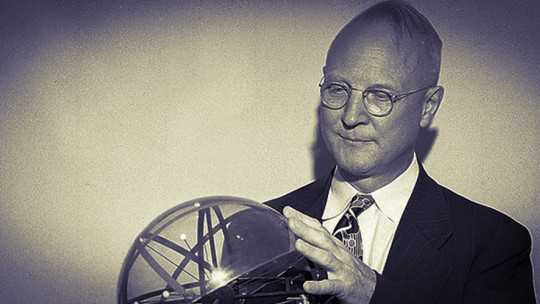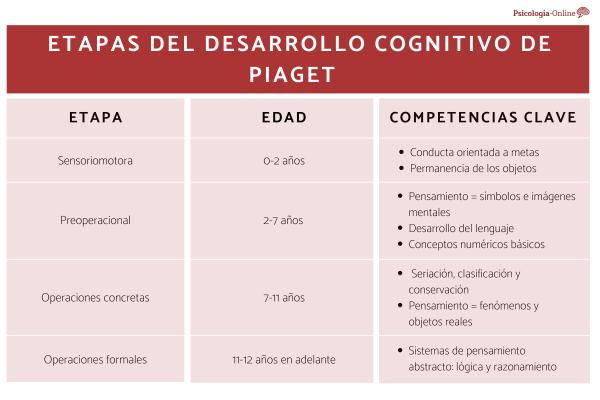We live in a dynamic world marked by the laws of nature in which nothing remains stable indefinitely, everything is subject to change. In the case of living beings, these changes can alter the balance they maintained with their environment and endanger their existence, so they need to adapt to them in order to continue living. Adaptation is therefore a strategy implemented by nature to preserve life and is a natural remedy to restore the balance between the living being and the environment.
If you are looking for information about adaptation to change according to psychology this PsychologyFor article will give you everything you need to know about this interesting topic.
What is adaptation to change?
Human beings are part of this dynamic world and, therefore, subject to multiple changes to which they must adapt to maintain their psychophysical stability and psychological well-being. When the change is caused by an event that alters the psychological state of the person, adaptation is an essential requirement to return to balance and stability. In this ambit, the ability to adapt to changes can be considered as a property of the human mind related to the mechanism of psychological homeostasis, and is understood as “the set of changes that occur in the Self (cognitive and/or behavioral) at the request of the changes produced in the environment in order to to maintain emotional stability and psychological balance.”
The adaptation mechanism works well when the change produced does not have much significance, but when a certain event causes a change that negatively affects to some of the fundamental factors that make up our daily life, as happens with the loss of a loved person, of a physical capacity, of a privileged situation, of a valuable asset, of professional prestige or social relevance, adaptation presents more difficulty and the negative consequences of non-adaptation are more serious.
How changes affect the mind
It has been shown that if the response to a stressful or emotionally charged life event is not adaptive, there is a risk of suffering a adjustment disorder (AD) which the DSM-V defines as a maladjustment reaction to a stressful psychosocial situation, developing a set of emotional or behavioral symptoms and whose clinical manifestations can include depressed mood (feelings of sadness and hopelessness), anxiety, worry, feeling of inability to cope with problems planning for the future or being able to continue in the present situation and a certain degree of deterioration in how the daily routine is carried out (it may involve problematic, risky or reckless behavior).
This reaction can appear in response to a single specific event, such as a serious traffic accident or the death of a family member, or after experiencing a stressful period of time, such as serious marital or work problems. The person who suffers from an adjustment disorder has the feeling that the situation he faces is unsustainable, but he is not able to envision a solution, he feels trapped, since the difficulties he experiences exceed their ability to cope causing frustration and discomfort that generate behavior that is disproportionate to the severity or intensity of the stressful situation.
Disturbing events and psychological traumas, in addition to the previous consequences, also tend to cause the appearance of some personal deficiencies (physical, emotional, economic, meaning in life) or generate new needs to satisfy and, in this sense, the The adaptation process advances as gaps are filled, providing satisfaction to new needs and generating exciting projects that return stability and psychological well-being to the person.

The adaptation process according to psychology: skills
Adaptation is the process that allows one to go from a state of psychophysical discomfort caused by a change in the circumstances surrounding a person’s life, to another state of well-being through action in some of the vital aspects that have been affected by said condition. change. An important characteristic of this process is that its effects are not immediate and can last over time. The process of adapting to changes must meet two basic requirements to be effective:
1. The ability to accept
Accept that the event that occurred has irremediably modified or is difficult to recover from some of the pillars that supported our daily existence, giving rise to a new unwanted harmful or unfavorable situation. This leads us to have to assume the irreversibility of the pre-existing situation and promote adaptation to the new one. Adaptation cannot occur if we constantly keep the memory of the past in our consciousness and let it influence our daily lives. Furthermore, accepting the situation also implicitly entails other added acceptances:
- Accept that every situation can change, whether for better or worse, which means that life necessarily has pleasant moments and situations and other unpleasant and suffering ones that are alternately exchanged. Life invites us to enjoy pleasant and pleasant moments, but it also carries the seed of pain and suffering that can germinate at any moment.
- Accept that we cannot control most of the events that can negatively affect us, either of personal origin (illnesses, physical or intellectual disabilities) or from our environment (accidents, natural disasters, interpersonal conflicts, etc.) and most of the time we limit ourselves to choosing between the possibilities that this offers us.
- Accept what we cannot change of us and/or our environment. The new situation may require changes in the way we see and relate to our environment, but not all the desired changes will be possible.
2. The search for well-being
The situation created by the disturbing event usually entails the disappearance of expectations, hopes, desires and future goals that we had, The present is broken and the foreseen future is diluted. This forces us to define a new scenario for the development of our lives and to put into practice the necessary actions so that this scenario can generate a psychophysical state of balance and well-being, eliminating the uncertainty and insecurity that afflicts us.
To carry out this mission The fundamental requirement is to have a proactive attitude, Because many people affected by a life change have a strong predisposition to think that nothing will change and an unquestionable desire for everything to remain the same, especially if they have difficulty mastering new situations, which is why they prefer to stay in the past. But reality ends up imposing itself and they cannot avoid the consequences: loneliness, lack of financial resources, emotional deficiencies, professional stagnation, physical or sensory limitations, lack of hope, fear of the future, etc., and All of this greatly complicates the adaptation process.

Adaptation to change and flexibility
When faced with a vital change, stillness, passivity or conformism are not very vitalistic attitudes, although sometimes they lead to a state of well-being. It has been shown that the denial of the event that caused the change, or the avoidance of its memory, although it generates well-being in the short term, does not eliminate the fact that the event has occurred, so it will continue to exist in our minds awaiting moments of psychological weakness to emerge and cause suffering again<
In this sense, the predisposition and positive attitude To face the new life situation they must be firm but also flexible. An illustrative example of the way forward is given by systems physics:
“If we fill a cubic-shaped container with liquid water, it will easily adapt to the contour of the container and adopt its shape, but in the event of any external force that shakes the container it will lose it, since its liquid nature makes it unstable. If it is in a solid state, like ice, if it does not have the same shape and size we will not be able to put it in the container and to adapt it to it we will have to use force and it will break. However, an intermediate state, such as viscous or gelatinous, adapts perfectly to any container slowly, which allows it to maintain its structure if it is subjected to a force, and is more stable than the liquid.
Skills to adapt to change
In the case of human beings, a rigid and intransigent attitude (solid) in the face of a change in your situation will make adaptation difficult or impossible and will cause psychological imbalance. Likewise, a person who is willing to accept any changes no matter how minimal, in their vital conditions and circumstances (liquid) will also suffer instability, as it will be difficult for him to find suitable conditions for himself and he will run the risk of losing his own identity. The intermediate posture (gelatinous) allows you to adapt to new situations that arise in a more slow and thoughtful way, avoiding errors and maintaining the integrity and continuity of the person’s psychological identity. Discover here how to have a positive attitude in difficult times.
The ability to adapt to changes and monitoring
In the field of psychology, a term that follows this approach is that of self-observation or monitoring, defined as: ““the ability of the person to perceive the keys to the most appropriate behavior in each situation and thus act according to its demands, leaving aside their own convictions and internal dispositions.”
This ability allows the person be flexible and develop appropriate behavior to the circumstances. If the person is able to accept his situation and continue developing his vital aspects, he will be responding in a flexible way. However, if he refuses to accept it and becomes entangled in a struggle against himself to deny the evidence, he may develop an inflexible pattern that causes him to distance himself from the necessary adaptation.
Adaptation as a psychological strategy
The person and their environment form an inseparable unit, they are correlated, so that the change in one necessarily affects the other, then the adaptation to the new situation may require a change in ourselves and/or in our environment. Thus, it can be seen that there are people who focus their strategy on the personal, on paying attention to their intimate Self (meditation, yoga, spirituality, etc.) and only turn to the environment as support for this intimacy (the advice of trusted people, a spiritual guide, etc.). However, others put the focus of attention on the environment: family, work, travel, friends, participating in social and cultural events, etc.
Given this double perspective, it is worth asking:
- ¿I can change myself that is, change the way I see things, the way I interpret the situation that has arisen and evaluate its consequences and, therefore, change my attitude and way of acting?
- ¿I can modify the environment so that it favors my expectations in a way that allows me a certain stability, balance and psychological well-being?
- Should I modify both at the same time?
Objects of change in psychological adaptation
In the case of choosing a person centered strategy the question focuses on determining what capabilities and/or aptitudes are required to adapt to our environment, what function we can develop and how we should relate to it from now on. One way to face this mission from a psychological point of view is through cognitive restructuring to establish a new way of interpreting things, feeling and acting (includes imagination and creativity to propose changes; modification of the system of moral values, replacing inappropriate ones with more adaptive ones; changes in behavior, customs and habits that are harmful with more appropriate ones).
If the chosen strategy is act on the environment, person-environment relationships can be grouped into three basic life scenarios: family, social and work, and change can occur in any of the three areas. Depending on which of them is affected, one strategy or another must be adopted, assessing the personal circumstances in each area. Under these scenarios, some examples of strategies could be:
- Familiar: modification of the type and way in which relationships with the family members involved occur (strengthening or reducing ties depending on the case).
- Social: establishment of new social relationships or modifying some aspect of existing ones.
- Labor: look for an activity and an environment that facilitate self-realization while maintaining an adequate level of personal well-being (balanced personal-work relationship).
It must be taken into account that modify the environment to adapt to our expectations it’s usually difficult since most of the elements that make it up are beyond our control, so It is usually more effective to focus on our own Self (an old proverb says: “A man cannot change the direction of the wind, but he can change the orientation and direction of the sails.”“).
In any case, it is build a new reality within everyday life, taking into account the opportunities that we have within our reach and the personal and environmental limitations that affect us. To do this, it is advisable to start by looking for the small opportunities that the environment offers us and that, although they may seem irrelevant, can serve as anchor points to rely on to gradually achieve more important goals on the path of adaptation.
In this aspect it is necessary to pay attention to emotions, which are the driving force of action, and these can be positive emotions (they facilitate change) or negative emotions (they prevent or make it difficult). Control of the negative emotions that arise from the situation that has arisen (fear, frustration, sadness, anger, etc.) and activation of the positive ones (excitement, hope, motivation, joy, etc.) are essential to achieve adaptation. However, on some occasions the strategy chosen to create a new reality involves assuming a cost (emotional, economic, logistical, etc.) and, in addition, the risk that it could give rise to another disturbing situation, so we should evaluate if the benefits or advantages that this can bring will be greater than the costs that it entails.
All actions undertaken in the face of changes will create typical behaviors that will form, over time, adaptation patterns. Gradually and as these adaptive patterns become a regular part of our daily lives (that is, they fulfill their function and adapt us to the new situation). We will begin to see things in a more balanced way, allowing us a more flexible response instead of an automatic, unique and invariable distress reaction. Adaptation patterns confer a certain emotional stability and psychological balance, but they also have a great drawback, because if we allow ourselves to be guided by them in an inflexible and rigid way, they restrict other options for action that are more appropriate to the circumstances of the moment.

Conclusion of psychological adaptation to change
The previous process of acceptance and the subsequent adaptation to the new situation are usually slow and complicated. The person must assume and accept the helplessness and frustration in the face of the situation that has arisen and be willing to overcome it, since a situation of prolonged psychological imbalance usually leads the person to a state of hopelessness and lack of enthusiasm for life. Likewise, he must assume that a satisfactory adaptation to the new situation is possible and, therefore, not fall into despair or think that this unpleasant situation has no end (it can be observed that the vast majority of people who have suffered the loss of a close person over time change their mental state and their attitude towards the situation. life and end up adapting to the new situation with more or less ease).
It is difficult to put aside the memory of the personal situation that was enjoyed and control the impulse to resign and let ourselves be carried away by circumstances, but instead of fighting against the thoughts, emotions and unpleasant sensations that emerge in our consciousness, We must build a new situation, a new vital scenario with our sights set on the future and not on the past, that is: forging the present with our backs to the misfortune of the past and looking ahead to the future with enthusiasm and hope<
This article is merely informative, at PsychologyFor we do not have the power to make a diagnosis or recommend a treatment. We invite you to go to a psychologist to treat your particular case.
If you want to read more articles similar to Adaptation to change according to psychology we recommend that you enter our Cognitive Psychology category.








